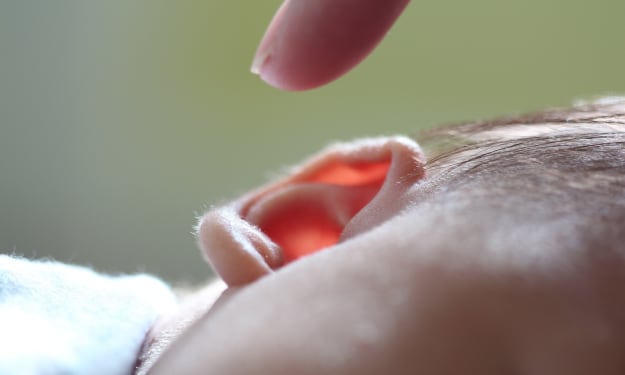How to Build a DIY Solar Oven to Cook Delicious Food
Use The Power Of The Sun To Satiate Your Hunger
While people often say you could cook an egg on the sidewalk when it gets super hot outside, no one usually follows through on that. Still, you can use the sun’s heat to cook food with the help of a solar oven. This environmentally friendly device allows you to harness the sun’s energy to heat up some of your favorite foods on sunny days.
You can easily and inexpensively make a solar oven at home using common household items. Building and using one of them can be a fun DIY project, a great way to teach and learn about eco-friendly practices, and a convenient, effective alternative to standard meal prep on sunny days. If you want to build and use a solar oven at home, these tips will help the device and your food soak up the sun.
What Materials Do You Need?
You can convert a cardboard box, such as a pizza or delivery box, into an effective solar oven. You’ll need the following materials:
A single piece of cardboard (if the box doesn’t already have a lid)
A ruler or tape measure
A pair of scissors or box cutters
A roll of aluminum foil
A roll of plastic wrap or piece of plexiglass
Black construction paper or black tempura paint
A roll of duct tape
A thermometer
You can also build a solar oven using a recycled satellite dish or another parabolic object that’s made of sheet metal. You’ll need the following materials:
Aluminum foil or old CDs
A tripod
A metal pan, can, or kettle
How Do You Build the Oven?
To build the cardboard oven, use the scissors or box cutter to cut a flap in the lid; leave an inch between each side of the flap and the edges of the lid. Fold the flap out so that it stands up when the lid’s closed. If the box doesn’t have a lid, cut out a piece of cardboard that matches the box’s overall width and tape it to one side of the top so it serves as a hinged lid. Line the flap’s inside tightly with aluminum foil and tape it on the lid’s outside.
Create an airtight window/heat seal by putting a double layer of plastic wrap or a piece of plexiglass over the opening in the lid. Leave an inch of overlap between the wrap or plexiglass and the sides of the lid; tape the layer down securely to seal any air out. Open the lid and line the bottom of the box’s interior with black construction paper or paint it with black tempura paint and let it dry. To insulate the box, roll up sheets of newspaper and tape them along the sides of the interior. Prop the lid up with a ruler so sunlight can enter the box.
To build the metallic, dish-shaped oven, line the satellite dish or other parabolic object with aluminum foil or old CDs. Attach a tripod to the rim and mount the kettle, pan, or can on the tripod. Finally, adjust the dish’s position so the light that it reflects focuses on the pan, can, or kettle.
How Do You Cook Using the Oven?
Your solar oven works by capturing and redirecting sunlight into its cooking area. The aluminum foil on the lid reflects the sun’s rays into the oven. As a black object will absorb all wavelengths of light and convert them into heat, the oven’s black bottom absorbs the direct and reflected sunlight and radiates its heat in order to cook the food. The transparent cover and bunched-up newspaper insulation trap the heat to cook the food more efficiently.
Since a solar oven takes longer to cook food compared to a conventional oven, you should plan ahead to take advantage of the maximum solar radiation that usually happens during the peak daylight hours of 11:00 a.m. to 3:00 p.m. Though the oven can be used on partly cloudy days, it’s more effective on bright, sunny ones. To account for longer cooking times, preheat the oven for about half an hour before cooking.
Put your food on a clear plastic or glass plate, a pie plate, or thin, lightweight, black cookware, then place it at the center of the cooking area so the heat radiates thoroughly through the food. Place an oven-safe thermometer next to the food and close the lid. Angle the oven towards the sun; adjust its position as needed to maximize its exposure to sunlight. Your food should be cooked within 2 to 4 hours. When the food’s ready, open the box’s lid and use oven mitts or potholders to safely take the food out.
What Are The Benefits of Using a Solar Oven?
Since it doesn’t burn wood or fuel in order to heat food, a solar oven is more environmentally friendly than a conventional oven or outdoor grill. Though it needs more time to cook food than standard ovens or grills, you can save time by heating items that have already been cooked like leftovers or soup. The oven is also great for cooking baked potatoes, s’mores, rice with vegetables, roasted apples with cinnamon, and more.
Compact, convenient, and solely powered by the sun, the oven can be used to prep food for get-togethers or during a power outage at home or serve as an alternative to a portable grill or a campfire on a camping trip. Since it doesn’t emit smoke or use open flames, it can be safely left alone while the food cooks; it also prevents the risk of accidentally starting a wildfire, helps improve air quality, and reduces its user’s carbon footprint.
Creating a solar oven can also work as the basis of a great science project. Building the oven can show younger and older learners the benefits of recycling or repurposing old materials. Using it as intended can also show how the sun’s energy generates heat and how a person can employ that energy to perform an everyday task.
Final Thoughts
If you want to build a fun, creative, eco-friendly DIY project, building and using a solar oven might be right up your alley. Easy to build using common items, this oven reflects the sun’s energy into a sealed heat sink to cook food. Baked potatoes, s’mores, and rice with vegetables all taste great after cooking inside the oven.
As it doesn’t burn wood or fuel, this oven is a more environmentally friendly cooking method. The compact device is easy to use at home or when camping; it is immune to failing during power outages and accidentally starting a fire. It also makes a great experiment to show the science behind it and uses for solar power.
This article first appeared on Total Apex Entertainment
About the Creator
Total Apex Entertainment & Sports
Total Apex covers every aspect of the sports, entertainment, and gaming industry. #RespectTheHustle
Enjoyed the story? Support the Creator.
Subscribe for free to receive all their stories in your feed. You could also pledge your support or give them a one-off tip, letting them know you appreciate their work.







Comments (1)
It is a nice reading.